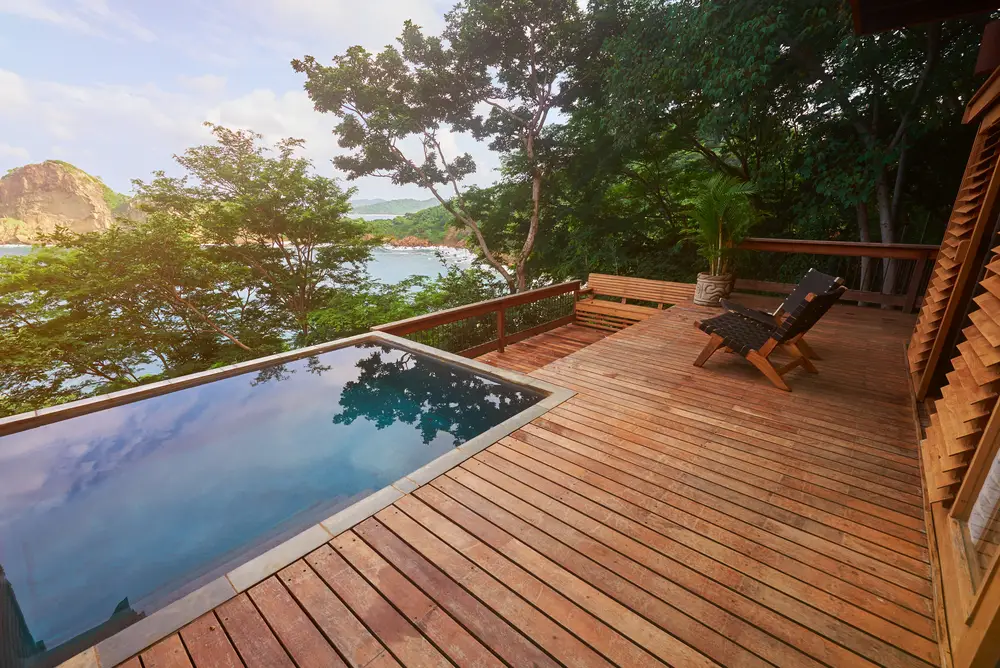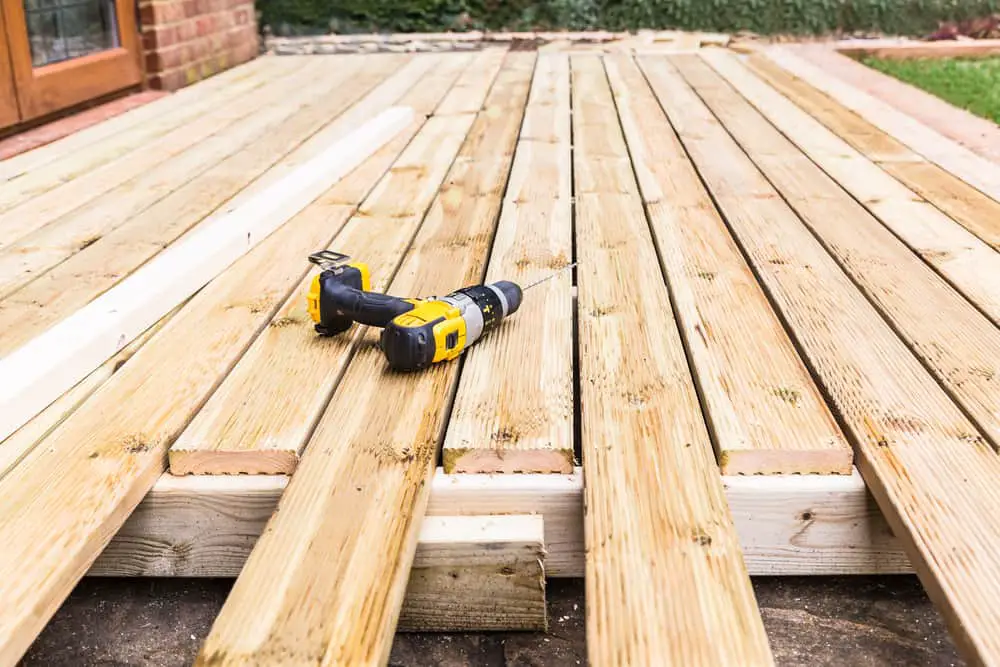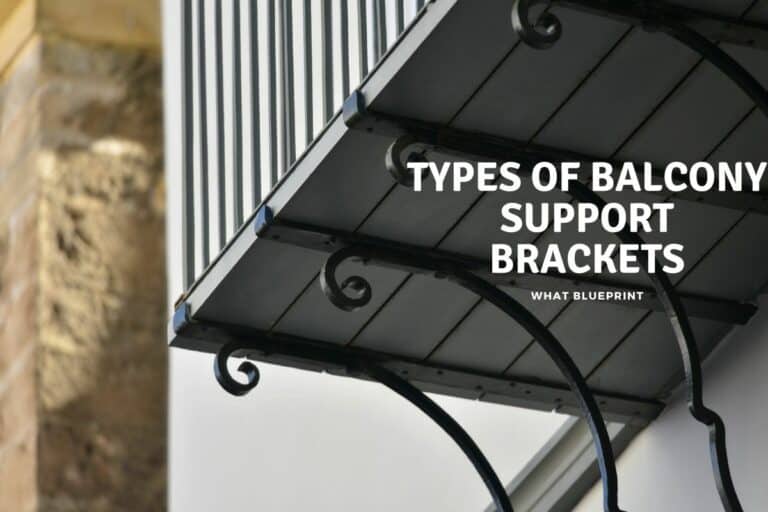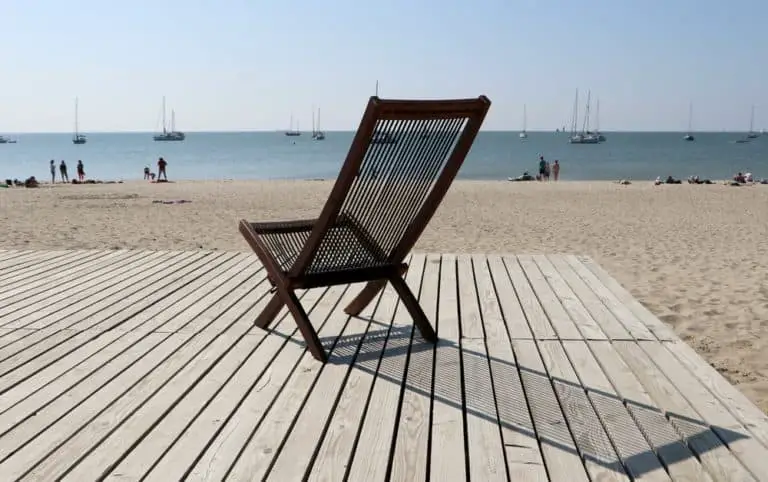How Often Does A Wood Deck Need To Be Replaced?
If you’ve bought a property with a wood deck or had one installed, you’re probably enjoying it a lot. However, you may be seeing signs of wear. Now you’re wondering, how often does a wood deck need to be replaced?
How often a wood deck will need to be replaced will depend on how well you look after it and its composition. Expect to replace a pressure-treated softwood lumber deck every 10 to 15 years, a cedar or redwood deck every 20 years, and an exotic hardwood deck every 30 years.
As many factors can affect the lifespan of a wood deck, it is essential to understand these factors so that you can accurately assess the state of your deck and make an informed decision about when it will need replacing.
The Average Lifespan Of A Wood Deck
According to the International Association of Certified Home Inspectors, decks made of wood planks will last about 10 to 15 years, whereas decks made of structural wood will last 10 to 30 years.
Traditional wood decks can be made of pressure-treated lumber, softwoods such as redwood or cedar, or hardwoods such as ipe, teak, or mahogany.
The lifespan of your deck will depend on the type of wood it is made of and how rigorously you follow the maintenance schedule.
How To Maintain Your Wood Deck
Every six to twelve months, you will have to inspect the surface and substructure of the deck and clean it with chemicals or a pressure washer to remove dirt, mold, and mildew. You should sand, stain, and seal the entire deck every three to four years.
No matter how rigorously you maintain the wood, the fibers are susceptible to damage from moisture in the environment. Water will cause warping and splitting of wood and encourage the growth of mold and mildew.
Even if you get a type of wood that is naturally resistant to moisture and rot, such as cedar, in time, it will succumb to the ravages of moisture damage.
You may get away with simply replacing parts of your deck for a while. Deck boards are usually the first item that you need to replace. However, if there are problems with the substructure, you will need to replace the entire deck.
You will need to do this every 10 to 15 years, in line with the lifespan of a wood deck.
You can extend the lifespan of your deck to its maximum by doing regular inspections and maintenance.
How The Composition Of A Wood Deck Affects Its Lifespan
You have three options for what kind of wood to use for a deck: pressure-treated lumber, rot-resistant softwoods such as cedar and redwood, and hardwoods.
Which wood you use will have a lot to do with your ease of sourcing it and the distance you have to ship it. For example, redwood is readily available and cheap on the West Coast, but you wouldn’t want to use it in the East unless you’re willing to pay top dollar.
Pressure-Treated Lumber For Wood Decks
Pressure-treated lumber, typically a softwood such as pine, has been pressure-treated with chemicals to increase its resistance to rot and insects. It is still prone to rot, mold, and mildew. However, it is easy to access and will cost less upfront.
Rot-Resistant Softwoods For Wood Decks
Softwoods such as cedar and redwood have a natural resistance to rot and insects. They have fewer problems with rot, mold, and mildew, but being soft, they gouge and dent easily, which means they will need a lot of sanding.
Cedar’s moisture content tends to change to match that of the surrounding air, so it tends to have fewer problems with moisture such as cracking or splitting, and you will often add years onto your deck’s life by using this wood.
Redwood absorbs finishes well, which also contributes to its durability.
With these two types of wood, expect deck lifespan to average 20 years.

Exotic Hardwoods For Wood Decks
Exotic hardwoods such as ipe, teak, and mahogany are incredibly dense and durable, translating into a longer-lasting deck. They will still tend to crack and weather and are more expensive and harder to source. They will have the most attractive look but require regular maintenance to keep it.
Hardwood decks can potentially last up to 30 years with good maintenance.
Should You Repair Or Replace A Wood Deck?
Doing regular inspections of your deck will help you enormously when it comes to deciding whether to repair your deck or replace it entirely. Inspect your deck surface boards and substructure (support posts, beams, joists, and ledger boards).
Professionals recommend inspecting once a year, in May (before peak summer use). However, any time is better than no inspection. Also, bear in mind that older decks may require more frequent checks.
If your inspection turns up rot in some of the deck boards, but the substructure is solid, you can get away with simply replacing the rotten boards. The same applies if fasteners are rusted or loose – just replace them.
However, if your inspection turns up the following signs, it’s time to replace your deck:
- Rot, mold, and mildew in the substructure of your deck.
- Excessive numbers of rusted or loose fasteners in the substructure of your deck.
- Loose ledger board due to rot in your deck’s substructure (the ledger board is the structural member connecting your deck to your home).
You may also choose to replace your deck if the cost of repairing it gets high enough to be comparable to the cost of replacing it, which will typically happen toward the end of a deck’s lifespan.
Conclusion
A wood deck is a fun thing to have, but it does have a limited lifespan and will need replacing.
Your wood deck will need replacing every 10-15 years if you use pressure-treated softwood lumber, every 20 years if you use rot-resistant softwoods such as cedar and redwood, and every 30 years or so if you can spring for exotic hardwoods such as ipe, teak, or mahogany.
You can prolong your wood deck’s lifespan with regular maintenance.
References
- https://www.familyhandyman.com/article/heres-how-often-you-need-to-replace-everything-in-your-home/#deck
- https://www.timbertech.com/ideas/how-long-does-decking-last/
- https://www.timbertech.com/ideas/best-wood-for-decks/
- https://www.bobvila.com/articles/wood-for-a-deck/
- https://www.timbertech.com/ideas/deck-replacement/
- https://www.timbertech.com/ideas/deck-repair-contractors/







